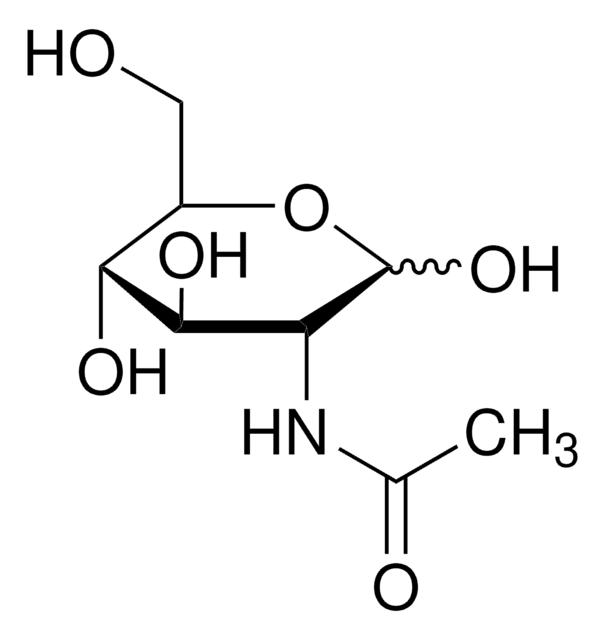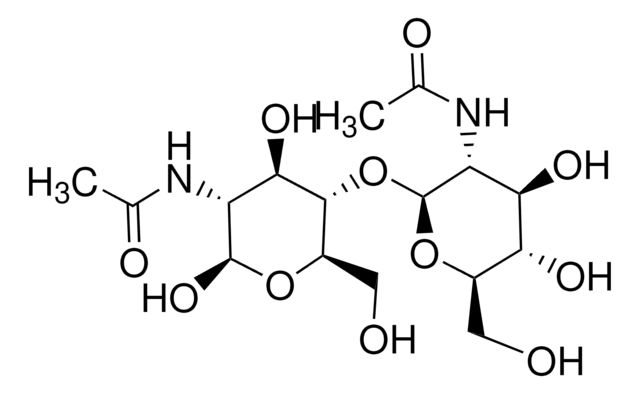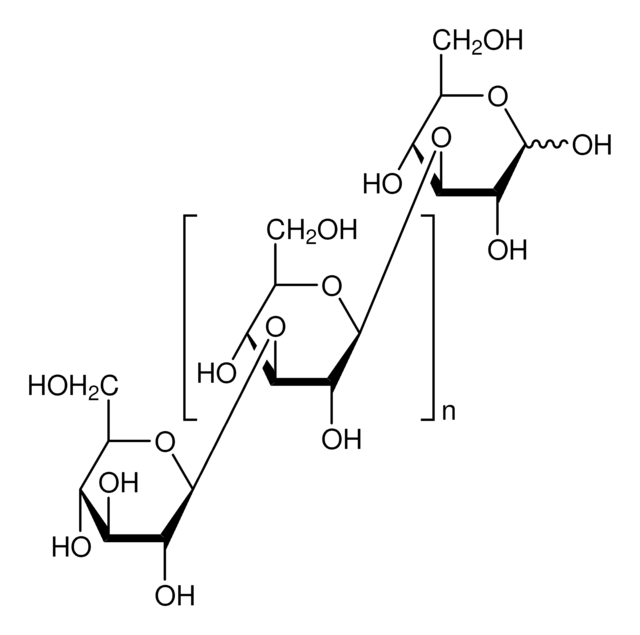A3007
N-Acetylmuramic acid
≥98% (TLC)
Sinónimos:
(R)-2-(Acetylamino)-3-O-(1-carboxyethyl)-2-deoxy-D-glucose, 2-Acetamido-2-deoxy-3-O-(D-1-carboxyethyl)-D-glucopyranose, MurNAc, NAMA
About This Item
Productos recomendados
biological source
synthetic
Quality Level
assay
≥98% (TLC)
form
powder
technique(s)
thin layer chromatography (TLC): suitable
impurities
≤1 mol/mol methanol
color
white
mp
125 °C ((257 °F ))
solubility
water: 50 mg/mL, clear, colorless
storage temp.
2-8°C
SMILES string
CC(O[C@H]1[C@H](O)[C@@H](CO)OC(O)[C@@H]1NC(C)=O)C(O)=O
InChI
1S/C11H19NO8/c1-5(11(18)19)20-10(9(17)8(16)4-14)7(3-13)12-6(2)15/h3,5,7-10,14,16-17H,4H2,1-2H3,(H,12,15)(H,18,19)/t5-,7+,8-,9-,10-/m1/s1
InChI key
SOARVSUSWULNDI-TVVSKHENSA-N
¿Está buscando productos similares? Visita Guía de comparación de productos
Application
Packaging
Other Notes
signalword
Warning
hcodes
Hazard Classifications
Acute Tox. 4 Oral - STOT SE 2
target_organs
Eyes,Central nervous system
Storage Class
6.1C - Combustible acute toxic Cat.3 / toxic compounds or compounds which causing chronic effects
wgk_germany
WGK 3
flash_point_f
Not applicable
flash_point_c
Not applicable
ppe
Eyeshields, Faceshields, Gloves, type P2 (EN 143) respirator cartridges
Elija entre una de las versiones más recientes:
¿Ya tiene este producto?
Encuentre la documentación para los productos que ha comprado recientemente en la Biblioteca de documentos.
Los clientes también vieron
Nuestro equipo de científicos tiene experiencia en todas las áreas de investigación: Ciencias de la vida, Ciencia de los materiales, Síntesis química, Cromatografía, Analítica y muchas otras.
Póngase en contacto con el Servicio técnico












